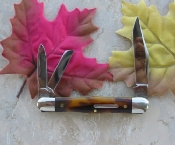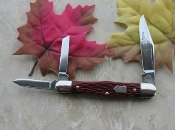Knife Reviews & Articles
QUEEN CUTLERY CO.
#48 QUEEN CLASSIC SPLITBACK WHITTLER
Specifications
Length closed: 3-1/2"
Length (open): 6"
Blade length:
- Master Clip Blade: 2-1/2"
- Pen Blade 1-5/8"
- Coping Blade 1-5/8"
Steel: D2
Number produced:
Red Stag : 50
Burnt Stag : 50
We have two of these to compare, and to whet your appetite. One is the Queen Classic #48 Red Stag, and the other the #48 Burnt Stag, both in D2 steel.
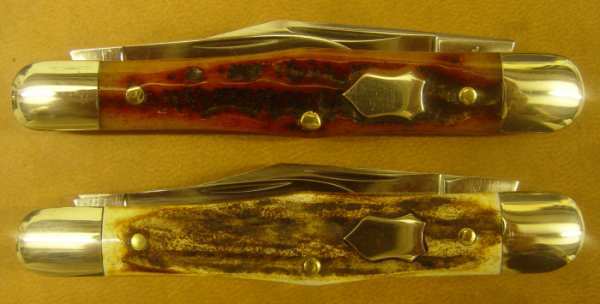
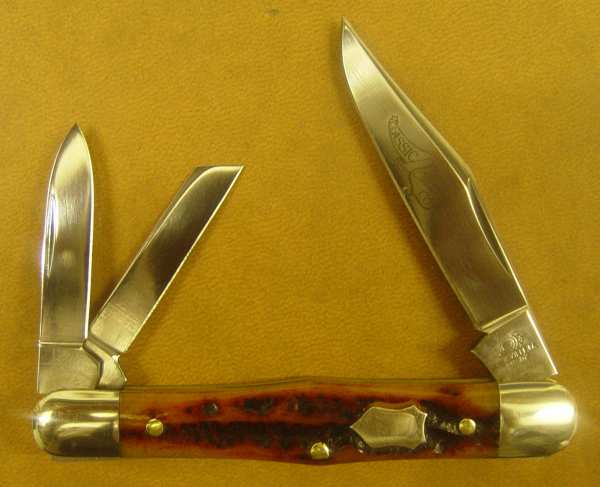
The Red Stag is second cut stag, that is, the inner part of the antler which has been dyed red and then jigging applied to make the surface look like a natural stag surface. Actually it is done very well indeed, and is very attractive. It is probably the best second cut stag that I have ever seen. The dye ranges from a honey colour through to very deep red, almost black in places.

The Burnt Stag knife is made from European Stag. (This is noticeably different from Sambar Stag). It has a shallower texture than Sambar, and with a "dusty" speckled surface. This one is a particularly good example (I selected it from several available), with thin scales, so that there is only a small amount of the inner stag showing where it is trimmed down to meet the bolsters. Other examples have chunkier handles, with more of the inner material showing. As European Stag goes, Queen have selected some pretty nice pieces, but it just can't compare with Sambar.
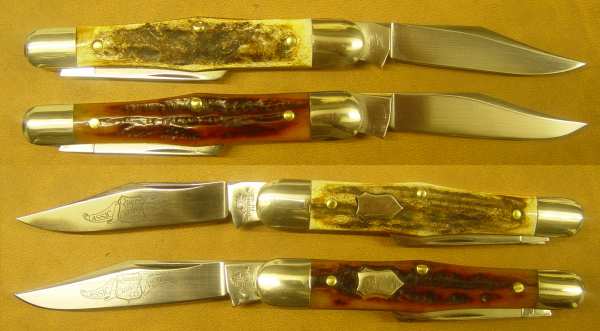
Its a very well proportioned knife, which sits well in the hand.
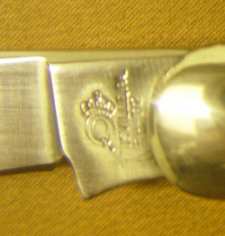
Craftsmanship
The Blades
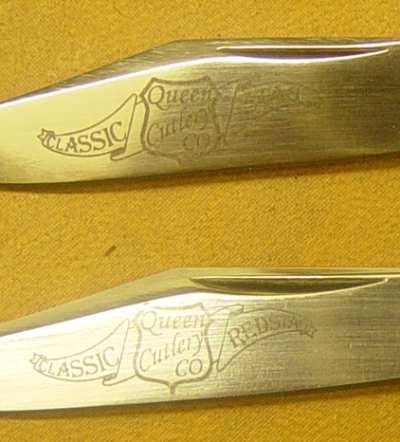
D2 steel is used for the blades. A very good steel indeed. The master blades are etched with the Queen Cutlery Co shield, and the "Classic Stag" or "Classic RedStag" in a ribbon etch either side.
The master clip blade on the Burnt Stag knife is quite hard to open. It opens easily to the half way point, but from there to fully open it is very hard against the backsprings. That main blade works against both the backsprings, and they are perhaps a little too strong. From the half open position you need to grasp the blade firmly between finger and thumb to pull it into the fully open position, and I never feel too comfortable doing that, as with a small blade such as this I always get the feeling that my fingers are too close to the business edge. It may loosen up with use though.The Red Stag knife doesn't suffer this problem.
One of the features about these blades, is that they are not designed to have a true half stop position, but they sort of do. There's about 10 degrees of play either side of the half position, due to the back of the tang being slightly rounded rather than flat. True half-stop knives literally snap into that position, but these don't.
The pen blade is just right for small whittling jobs, and if you are a whittler, you will end up using this blade the most. Something that I look for in a small whittling blade is that it has "feel" - a degree of give and springiness. This one has that, whereas many whittlers, especially in stainless 420 steel don't.
This is a "splitback" whittler. That means that the two smaller blades each have their own backspring, and that the master blade works against both springs. Between the springs is a wedge of brass. This knife, by the way, is built on the same frame as the Moore Maker splitback whittler (also made by Queen) although that one has a small clip blade in place of the pen, and is in 1095 carbon steel. (The Queen Red Stag, in my opinion knocks spots off the Moore Maker though).
Bolsters
The bolsters are nicely rounded and smooth, and nicely ground on the ends of the knife with an even radius. I like that in a knife.
Sharpening
Some people consider D2 steel somewhat hard to sharpen, but it isn't really, especially with such small blades. For whittling, you might like to reprofile the cutting edge to a shallower angle. (See here for sharpening hints).
General fit and finish
The general fit and finish on the two knives is excellent. There are no gaps between the liners and the scales or springs on the Red Stag, although in the example I have of the Burnt Stag, you can see light between the scales and liners in a couple of places.. One point that I always look for is the radius of the ends, and these are nicely finished with no stepping or grind marks. Both knives, however, do suffer from that "Queen feature" of having a sharp edge to the back of the tang where it protrudes above the handles in the closed position. (Why do Queen always do that?) That corner can be rounded off slightly with a stone. Blade separation in the closed position is perfect. There's no way that you are going to see any blade rub with this knife.
Which would I choose between them? Frankly, I prefer the Red Stag to the Burnt (European) Stag. It has more character, and certainly a softer, smoother feel to it.
With only 50 each of these made, they are going to sell out quickly and are going to be rare and hard to obtain later. Its the sort of knife that people are going to hang on to!
Cost and Value
These knives sell at a dealer price of $75.00, and are listed as the Queen Classic #48 Whittler
Value: 10/10
These knives were obtained from Bill Horn at Cumberland Knife Works -see the Queen Classics. (Four models are available)
|
|
|
|
June 2005
Copyright ©2005 Rod Neep All Rights Reserved
Photographs by Rod Neep


